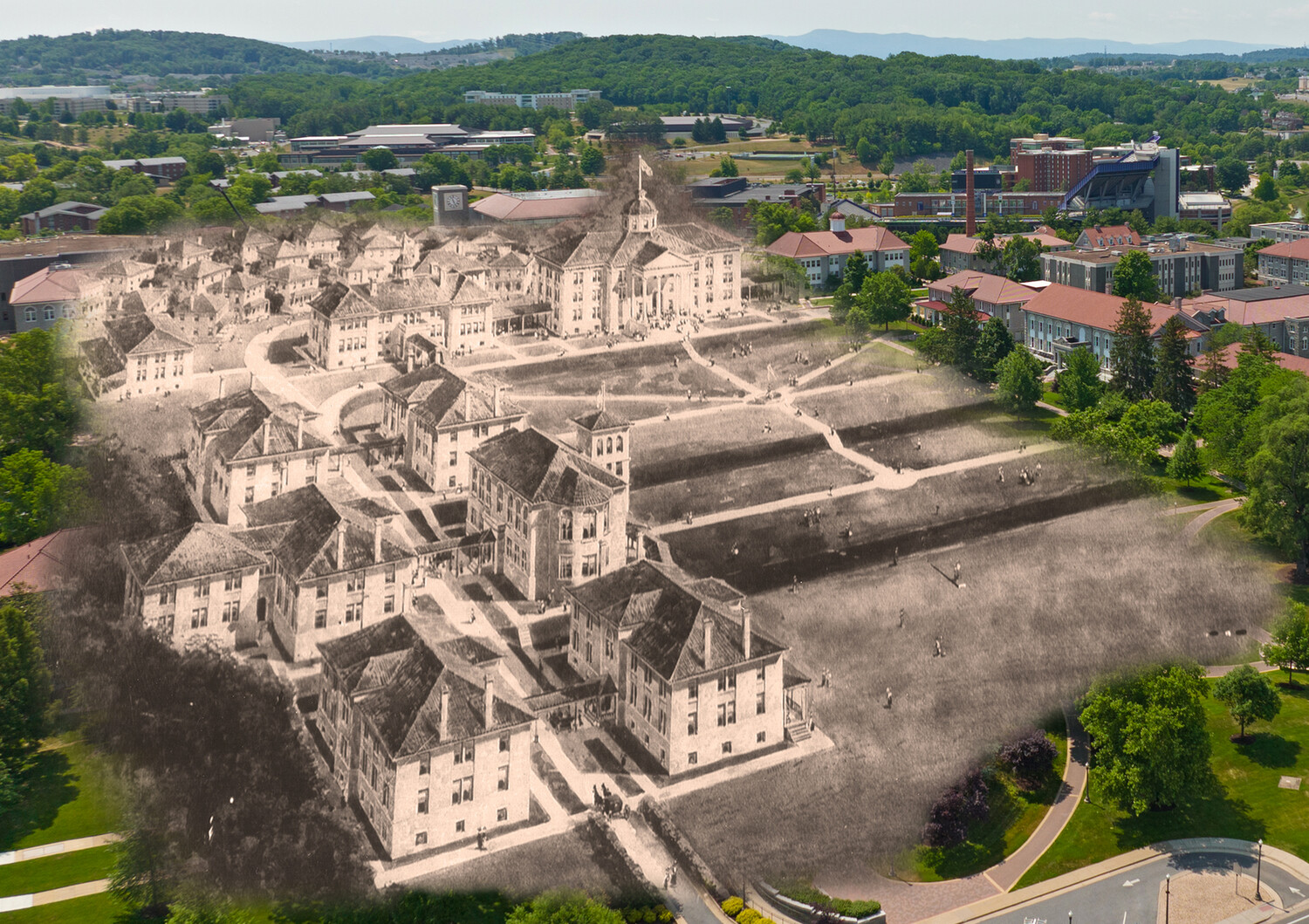Stargazing in the summer along the North River. An autumn ride on Skyline Drive. A winter hike through the snow-flaked George Washington National Forest. Watching for the chipping sparrow during the spring. Dukes are fortunate to be able to share in these natural wonders in the greater Harrisonburg community.
Shenandoah Valley Ever Green, a seasonal radio program on WMRA founded by education professor Tim Thomas, illuminates our collective responsibility to protect and participate in nature beyond our backyard or windshield.
“We’ve been very intentional about trying to highlight natural systems that people might sort of take for granted,” Thomas said. “Our very first story was about indigenous populations in the valley, and how they interacted with nature and used the landscape.”
Regular features include discussions on astronomy and identifying migratory species in the area with Amy Goodall, professor of geography. While regional experts deliver niche environmental facts about the valley, the program also inspires listeners to step outside their front doors, support their local ecosystems and live more sustainably.
Each theme-based episode further captivates audiences through place-based education — a learning tool Thomas uses to connect people to their environment and embrace nature. Research has shown that students who encounter their locality in lessons outside of classroom walls and are invited to contemplate their surroundings are more likely to become adults who care for their natural resources.
A Faculty Engagement Grant from the JMU Faculty Senate enabled Thomas and his team to launch the first episode in Summer 2022. Backed by seven Madison Trust funders, the program will stay on the airwaves through the end of 2024. “We hope it will go beyond two years, but it’s a matter of funding,” Thomas said.
He noted that he couldn’t have gotten the radio program off the ground without the expertise of his neighbor and co-executive producer, media arts and design professor Ryan Alessi. One summer afternoon in 2021, while they were working in their yards, Thomas mentioned the idea for Shenandoah Valley Ever Green to Alessi, sparking a conversation about journalism and radio production. The seed was planted.
“Tim brought this incredible vision for a program that could be part educational and part newsy in a conversational way, and all the while it could provide some funding for hands-on activities in K-12 classrooms,” Alessi said.
Not only has the radio show become a model of university engagement with the local community, but it also helps strengthen faculty-student relationships.
Jacqui Himmel (’23), a SMAD major, heard about the radio project through Alessi, her professor.
“He made an announcement to all students that if they had an interest in the environment and journalism to come up at the end of the class,” Himmel said. “And I remember thinking, ‘Oh my gosh, those are the two things I’m passionate about!’ From that moment, I was put on a committee with Alessi and Tim Thomas to help bring this idea to life.”
Until Alessi’s announcement, the COVID-19 pandemic had prevented Himmel from getting involved in extracurriculars as an undergraduate. The radio show helped her make friends and gave her mentors to look up to.
“Both Alessi and Thomas supported me throughout the whole project, giving advice and giving me the independence and autonomy to do so. I finally felt like I was getting the experience I needed,” Himmel said.
She and other student correspondents played a role in all aspects of audio production, from pitching stories and conducting interviews to scriptwriting and editing recordings — in the end, creating cohesive soundbites.
“If it weren’t for the students, there would be no show,” Thomas said. Given the limited time and energy of the staff, student reporters are better positioned to collect sound samples in the field and expand the project’s reach, keeping the storytelling from being JMU- or Harrisonburg-centric. “They help us cast a broad net over the valley, which is what we want to do,” he said.
Alessi echoed these sentiments. “I can’t say enough wonderful things about Tim and the student contributors who have made this possible. It’s been so much fun and such an honor to work with them.”
In addition to gaining professional radio broadcast experience, Himmel will never forget the reward of hearing her first story. “I set up my old radio, positioned the antenna just right and waited eagerly to hear the program. I was so excited I forgot that I could listen to the program live from WMRA’s website, but there’s something special about hearing it over the radio,” she said. “I was proud of our creation, all the hard work everyone put in and obstacles we overcame.”
With JMU’s unique location, surrounded by lush, green mountains and fields, making decisions and taking actions toward preserving the land, air, water, flora and fauna is important, Alessi said.
“There’s also a certain hopefulness to the term ‘evergreen,’” he added, “that if properly maintained, a cycle will continue endlessly: forever green. Sometimes, it’s just nice to be motivated by that kind of optimism.”
To learn more about the people and initiatives supporting the environmental health of the Shenandoah Valley, tune in to the Summer 2023 episode next month: https://tinyurl.com/yeymwey7.
